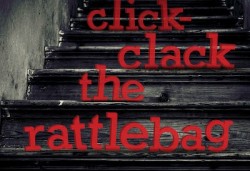In 1955 Bela Lugosi was in a sad state. The once-handsome, Hungarian-born star of Dracula had seen his career degenerate over the previous two decades until at last he was reduced to playing a cruel parody of himself in some of the tackiest B horror films ever made. Along the way he picked up a drug habit. In late April of 1955 the 72-year-old actor, destitute and recently divorced from his fourth wife, checked himself into the psychopathic ward at Los Angeles General Hospital. A few days later, in a hearing held at the ward, Lugosi pleaded with a judge to commit him to a state hospital. A United Press article from April 23, 1955 describes the scene:
Although weighing only 125 pounds and only a shadow of his former self, Lugosi’s voice was clear and resonant as he told the court how shooting pains in his legs led him to start taking morphine injections in 1935. Without morphine, he couldn’t work, Lugosi said.
“I started using it under a doctor’s care,” he said. “I knew after a time it was getting out of control.”
“Seventeen years ago, on a trip to England, I heard of Methodone, a new drug. I brought a big box of it back home. I guess I brought a pound,” Lugosi said.
“Ever since I’ve used that, or demerol. I just took the drugs. I didn’t eat. I got sicker and sicker.”
The judge commended Lugosi for taking action to fight his addiction, and committed him to the Metropolitan State Hospital in Norwalk, a suburb of Los Angeles, for a minimum of three months and a maximum of two years. During his time in the hospital, the old man plotted his comeback. In The Immortal Count: The Life and Films of Bela Lugosi, Arthur Lennig writes:
While at the hospital, Lugosi had been given the script of his next Ed Wood picture, The Ghoul Goes West, a strange concoction in which a mad doctor goes out west to carry out his scheme to make super-creatures out of cowboys and rule the world. The actor looked forward to this forthcoming production, which he believed would begin about ten days after leaving the hospital, and brandished the script as proof that he would start work. “It’s very cute,” he said to the reporters. It probably wasn’t, but Lugosi no doubt believed that all the front page publicity, however notorious, would aid in his comeback, a comeback that would eventually raise him above the lowly ranks of Ed Wood’s shoestring productions. Bela posed for a photograph with the script in one hand while his other hand was dramatically raised in an assertive fist.
The interview above was filmed on August 4, 1955, one day before the actor’s release from the hospital. In the clip, Lugosi smiles and declares himself “a new man.” Less than three weeks later he married his fifth wife, an obsessed fan who reportedly sent him a letter every day he was in the hospital. The Ghoul Goes West never materialized, but Lugosi collaborated with Ed Wood on a couple of other projects, including a movie that some critics would eventually call “the worst film ever made,” Plan 9 From Outer Space. As his hope of a genuine comeback crumbled, Lugosi drank heavily. On August 16, 1956–barely over a year after his release from Metropolitan State Hospital–Lugosi died of a heart attack. He was buried in his Dracula costume.
Several Lugosi films appear on our big list of Free Movies Online.


